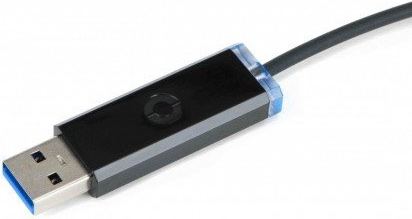Corning this week said that it had begun to sell its optical USB 3.0-compatible cables that can extend data transmission beyond the 3-meter limitation of comparable copper cables. Corning’s cables can send data at up to 5Gb/s data-rate at distances up to 30 meters. Unfortunately, such cables are rather expensive.
The new cables are enabled by Corning ClearCurve VSDN optical fiber and are up to 50 per cent thinner and up to 80 per cent lighter than comparable copper cables, qualities that enable convenient transport. With a “zero-bend” radius, they can withstand bending, squeezing, and tangling without damage or loss of function, making them ideal for routing through the harsh environment of a crowded workspace.

Corning’s USB 3.0 optical cables feature special connectors that integrate custom chipsets as well as optical transmitters and transceivers. Since such hardware is quite expensive, the cables cost more than $100. Still if one needs to connect a USB device to a PC that is far away, it is virtually impossible to do it cost-efficiently.
As the chipsets inside connectors that convert USB signals into optical signals and vice-versa are custom-designed, they only support specific USB 3.0 and USB 2.0 standards and will unlikely work, for example, in USB 3.1 mode at 10Gb/s data-rate.
USB 3.0 optical cables by Corning currently come in lengths of 10 meters with “A-to-receptacle-A” connectors for maximum flexibility to connect devices with different USB connector form factors, such as B or Micro B with short adapters. Similar cables will also be available in lengths of 15 and 30 meters later this year.
Corning USB 3.0 optical cables are now available online through Accu-Tech and Amazon, starting at $129.
Discuss on our Facebook page, HERE.
KitGuru Says: Optical USB cables are needed for special-purpose setups, so the price is not something that is important for current users of such interconnections. What is will be interesting to know is how significantly can the cost of such optical cables be lowered once cables like these are produced in truly large quantities?
 KitGuru KitGuru.net – Tech News | Hardware News | Hardware Reviews | IOS | Mobile | Gaming | Graphics Cards
KitGuru KitGuru.net – Tech News | Hardware News | Hardware Reviews | IOS | Mobile | Gaming | Graphics Cards


